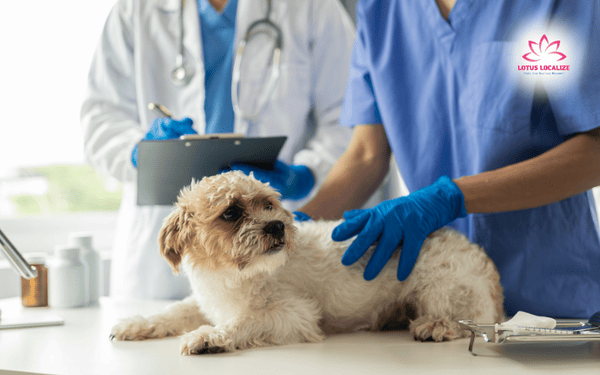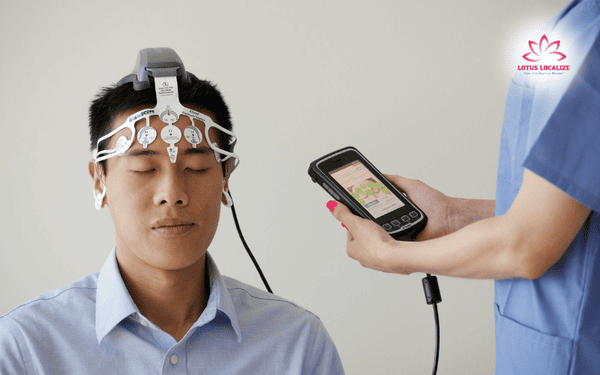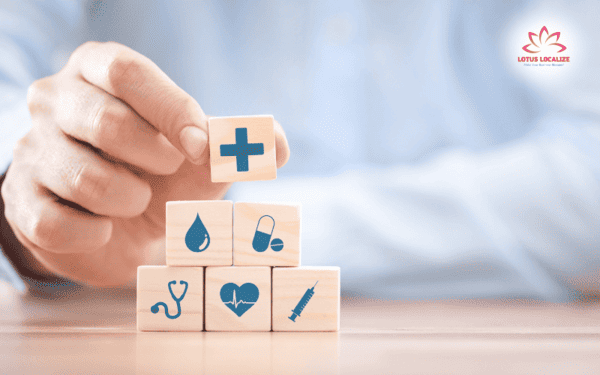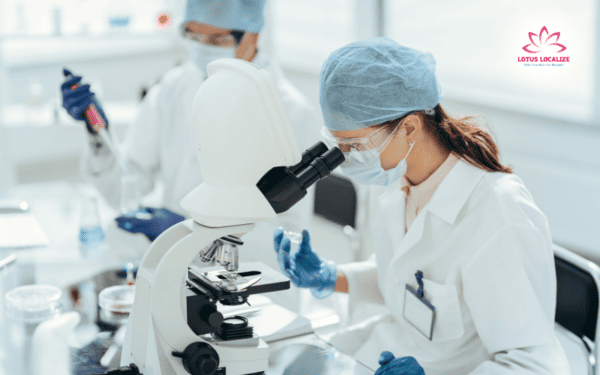
Laboratory report translation: Ensuring accuracy and clarity in scientific communication
In the global landscape of scientific research and innovation, the need for accurate communication is more vital than ever. Laboratory report translation plays a key role in facilitating international collaboration, regulatory compliance, and effective dissemination of findings. This article explores the intricacies of laboratory report translation, its significance, challenges, quality benchmarks, and how to choose the right service provider.
What is a laboratory report translation?
A laboratory report translation refers to the process of converting scientific documents—such as test results, research findings, clinical data, and analytical reports—from one language to another. These reports are essential for communicating experimental results and methodologies in industries such as:
- Clinical diagnostics (e.g., blood tests, biopsy results)
- Pharmaceutical development (e.g., stability testing, bioequivalence studies)

- Environmental science (e.g., soil, air, or water analysis)
- Food safety and agriculture (e.g., pesticide residue testing)
- Industrial labs (e.g., materials testing, product safety analysis)
Unlike general translation, laboratory report translation demands high levels of subject matter expertise, scientific literacy, and familiarity with regulatory terminology. Translators working in this field must understand both the linguistic and technical nuances to ensure precision, clarity, and integrity of the original content.
Read more: How to achieve accuracy in medical report translation
The importance of laboratory report translation in scientific workflows
In today’s interconnected world, scientific collaboration often spans countries and continents. Accurate laboratory report translation is critical for:
Global research collaboration
International research projects require seamless communication across borders. Translated laboratory reports ensure all stakeholders—scientists, technicians, and regulatory authorities—have access to consistent and understandable information regardless of language barriers.
Regulatory compliance
Many laboratory reports are submitted to national and international regulatory bodies such as the FDA, EMA, or ISO. Errors or inconsistencies in translated reports can delay approvals, affect compliance, and risk legal consequences. High-quality translations help ensure that reports meet required standards.
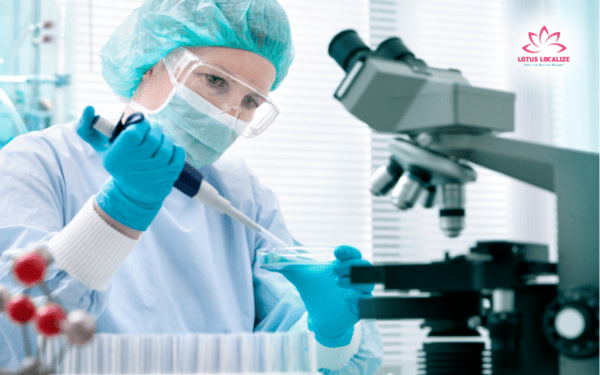
Product development and testing
In industries like pharmaceuticals, biotechnology, and food science, laboratory reports document every step of product testing and development. Accurate translations help teams interpret results correctly and make informed decisions during product lifecycle stages.
Clinical trials and patient safety
In clinical settings, laboratory reports can influence treatment plans and patient safety protocols. Accurate translation is essential to convey test results, methodologies, and interpretations without errors that could lead to misdiagnosis or mistreatment.
In all these scenarios, precise laboratory report translation serves as a cornerstone of trust, enabling scientific progress, regulatory alignment, and better health and safety outcomes on a global scale.
Major obstacles in translating laboratory reports
Translating laboratory reports is far more complex than converting text from one language to another. It presents several unique challenges:
- Technical terminology: Laboratory reports are often packed with highly specialized terms, abbreviations, and acronyms. Misinterpreting or mistranslating these terms can compromise the meaning and impact data accuracy.
- Data integrity: Many laboratory reports include tables, charts, figures, and numerical data. Translators must not only convert the language but also ensure all units, symbols, and data representations are accurate and consistent with the original document.
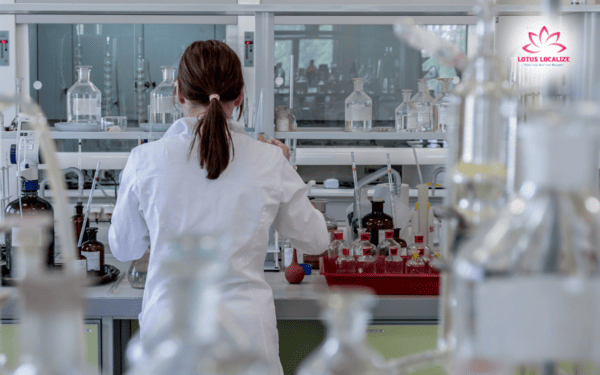
- Contextual precision: Scientific language is often dense and context-dependent. A term might have different meanings in chemistry, biology, or physics. Understanding the context of the report is crucial for providing an accurate translation.
- Regulatory standards and localization: Different countries and regions have distinct reporting standards. Translators must be familiar with local regulatory requirements and formatting standards to deliver compliant translations.
- Confidentiality: Laboratory reports often contain sensitive or proprietary information. Ensuring data privacy and confidentiality throughout the translation process is essential for ethical and legal compliance.
These challenges highlight the critical need for professional translators with scientific expertise, industry-specific knowledge, and a strong grasp of regulatory frameworks to ensure laboratory report translations are not only accurate, but also reliable, secure, and globally compliant.
Read more: Understanding business translation: Definition, importance, and applications
What makes a high-quality laboratory report translation?
To ensure your laboratory report translation meets the highest standards, several key elements must be in place:
- Subject matter expertise: A translator with a background in science, medicine, or engineering is better equipped to understand and translate technical content accurately. Many professional services work with translators who have degrees or work experience in the relevant scientific field.
- Linguistic accuracy and clarity: A high-quality translation is not just technically correct but also clear, coherent, and easy to understand. Clarity is particularly important when the translation will be reviewed by regulatory authorities or non-native speakers.

- Consistency in terminology: Using consistent terminology throughout the report is vital for readability and comprehension. Glossaries, translation memories, and terminology management tools help maintain this consistency.
- Compliance with industry standards: A quality translation aligns with international guidelines such as ISO 17100 or local regulatory standards. Formatting, references, and documentation style should also adhere to industry expectations.
- Quality assurance (QA) processes: A robust QA process includes proofreading, peer review, and validation by experts to catch errors and improve overall quality. Some services also provide back-translation to verify the accuracy of sensitive documents.
By integrating these essential elements, organizations can ensure their laboratory report translations uphold scientific integrity, support regulatory approval, and foster clear communication across global teams.
How to choose the right laboratory report translation service
Selecting a reliable translation partner can significantly impact the success of your scientific projects. Here are key factors to consider:
- Specialization in scientific translation: Choose a provider that specializes in technical or scientific translation rather than a generalist agency. Specialized providers understand the complexity and rigor of lab reports.
- Certified translators and QA processes: Ensure the translators are certified and the agency has a clear QA protocol. Look for ISO-certified agencies or those that follow regulated industry practices.

- Data security and confidentiality: Make sure the service uses secure file transfer systems, has non-disclosure agreements in place, and follows data protection regulations like GDPR or HIPAA (for medical reports).
- Reputation and references: Check client testimonials, case studies, and reviews. A reliable agency should have experience with laboratories, research institutes, or regulatory bodies.
- Turnaround time and support: Time-sensitive research projects require fast and reliable turnaround. Ensure the provider offers flexible timelines, responsive support, and post-delivery revisions if needed.
Choosing the right laboratory report translation service not only safeguards the accuracy and confidentiality of your data but also ensures smoother workflows, regulatory compliance, and successful scientific outcomes across global collaborations.
Lotus Localize, a leading provider of scientific and technical translation services, ensures your laboratory reports are translated with precision, confidentiality, and compliance with international standards.
Technology and tools in laboratory report translation
The rise of translation technology has revolutionized how laboratory reports are translated. While human expertise remains irreplaceable for scientific accuracy, technology enhances speed, consistency, and quality.
- Computer-assisted translation (CAT) tools: CAT tools like SDL Trados, MemoQ, and Wordfast help manage terminology, ensure consistency, and speed up the translation process. These tools store previously translated segments in a database for reuse.
- Terminology management systems: Tools like SDL MultiTerm allow translators to maintain customized glossaries for specific clients or industries. This ensures uniformity across multiple documents and projects.
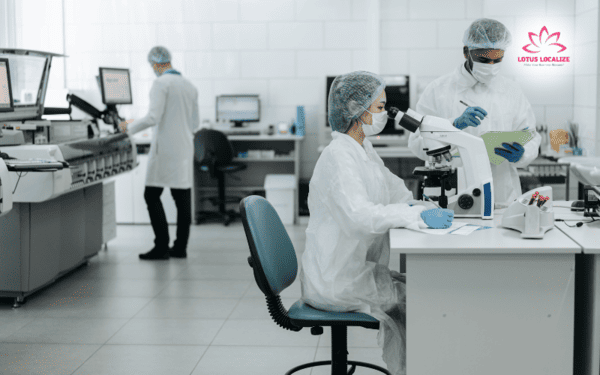
- Machine translation with post-editing: AI-powered translation engines (like DeepL or Google Translate) can assist with draft translations, especially for internal use. However, post-editing by a professional is essential for scientific accuracy.
- Automated quality assurance: QA tools such as Xbench or Verifika can detect issues like missing numbers, inconsistent terminology, or formatting errors before final delivery.
- Data security software: Secure platforms for file sharing, version control, and user authentication are crucial in safeguarding confidential lab report data during the translation process.
When used strategically alongside human expertise, these technologies not only streamline the translation process but also enhance accuracy, maintain consistency, and safeguard sensitive information—making them indispensable tools in modern laboratory report translation.
Laboratory report translation is a critical element in the global exchange of scientific information. It enables researchers, clinicians, and regulatory agencies to collaborate effectively and make well-informed decisions. However, achieving high-quality translation requires more than just language skills—it demands scientific expertise, attention to detail, and a commitment to accuracy.
As a trusted partner for scientific and technical translations, Lotus Localize delivers accurate and confidential laboratory report translations tailored to meet global regulatory standards.
Lotus Localize offers professional translation services for various specialized industries: life sciences translation, technology translation, manufacturing translation, e-learning translation, legal translation, marketing translation… ensuring your message resonates—whether in writing or speech. Let us help you bridge linguistic gaps and connect with audiences worldwide.
Looking for a reliable laboratory report translation service? Contact us today at our hotline or Whatsapp: + 84 866 224 968 or visit the websites: dichthuathoasen.com/en/. Let Lotus Localize accompany you in bringing products, people, and culture to the global stage, and together, we’ll create miracles!
QUALITY PROMISE
At Lotus Localize, we are dedicated to delivering high-quality services and ensuring the utmost satisfaction in every client project. Our team of translators and staff consistently exert effort and adhere rigorously to quality management procedures. This commitment guarantees that each project progresses seamlessly, meets deadlines, and exceeds our clients' expectations.


